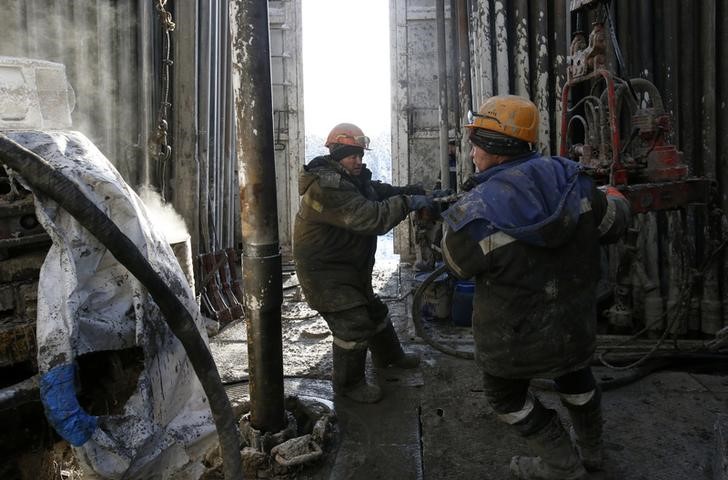* Venezuela says to cut 95,000 bpd output in new year
* Iran, Iraq expects OPEC to abide by agreement
* OPEC, non-OPEC supply cut deal to kick in from Jan.1
* Coming Up: API U.S. oil inventory data 4:30 p.m. EST (2130 GMT) (Adds settlement, latest U.S. crude inventory forecast)
By David Gaffen
NEW YORK, Dec 28 (Reuters) - Crude oil prices edged up for a fourth consecutive session on Wednesday, close to their highest levels since mid-2015, ahead of U.S. oil inventory figures and as the market awaits evidence of OPEC supply reductions in the new year.
U.S. benchmark West Texas Intermediate (WTI) crude oil futures CLc1 settled 16 cents higher at $54.06 a barrel, not far from the year's high of $54.51 reached on Dec. 12.
Brent crude futures LCOc1 ended up 13 cents at $56.22 a barrel. The international benchmark hit $57.89 on Dec. 12, its highest since July 2015.
Oil prices have gained 25 percent since mid-November, helped by expectations for OPEC's supply cut and solid U.S. economic figures that have also bolstered equity prices.
Trading was thin, with just 294,000 front-month futures contracts changing hands, compared with a daily average of 525,000 over the last 200 days. It is expected to remain quiet for the balance of the week.
Analysts polled ahead of weekly inventory reports from industry group the American Petroleum Institute (API) and the U.S. Department of Energy's Energy Information Administration (EIA) forecast, on average, that crude stocks declined 2.1 million barrels in the week to Dec. 23. EIA/S
The API data will be released on Wednesday at 4:30 p.m. EST (2130 GMT), while the EIA report has been rescheduled to Thursday at 11 a.m. EST (1600 GMT), following the federal holiday on Monday because of the Christmas holiday.
The market is taking a wait-and-see approach to the official start of the landmark deal reached by the Organization of the Petroleum Exporting Countries (OPEC) and several non-OPEC members to reduce their output. The deal is set to kick in from Jan. 1. and non-OPEC producers are expected to lower production by almost 1.8 million barrels per day (bpd), with Saudi Arabia, OPEC's largest producer, agreeing to bear the lion's share of the cuts.
Iraqi Oil Minister Jabar Ali al-Luaibi said on Wednesday his country, which has seen fast production growth in the past two years, would cut supply by 200,000-210,000 bpd from January.
Luaibi said on a visit to fellow OPEC member Kuwait that he saw oil prices rising to $60 per barrel as the cuts would help ease the global glut of the past three years, according to Kuwait News Agency (KUNA).
Iranian oil minister Bijan Zanganeh also said on Tuesday he expected OPEC to abide by the deal. "While competing, we do have engagement," Iranian news agency Shana quoted him as saying.
OPEC member Venezuela also said it will cut 95,000 bpd of oil production in the new year. from various officials "holds market expectations at a high level, but also entails some risk of disappointment if actual January production data shows output only ramping gradually toward the lower target levels," wrote Tim Evans, analyst at Citi Futures.
